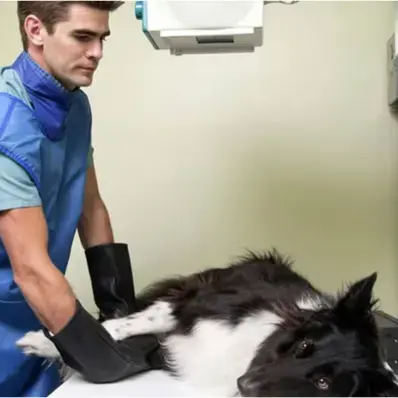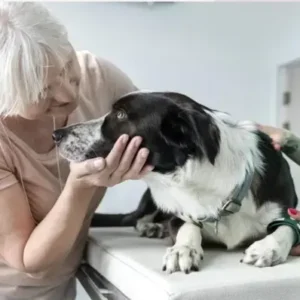What is a Collapsed Trachea?
A collapsed trachea occurs when the C- shaped cartilage rings weaken and flatten, leading to partial or complete obstruction of the airway. This condition can cause chronic coughing and difficulties when a dog breathes, significantly impacting their quality of life.
Causes of Collapsed Trachea in Dogs
Understanding the causes of collapsed trachea in dogs can help in early detection and prevention, allowing for more effective management of the condition.
- Genetic Predispositions: Certain dog breeds are more prone to weak tracheal cartilage.
- Environmental Factors: Exposure to irritants like smoke or dust can worsen the condition.
- Lifestyle and Health-Related Risks: Obesity and overuse of collars can increase the likelihood of tracheal collapse.
- Hormonal Influences: While hypothyroidism is not a direct cause of tracheal collapse, it can weaken cartilage integrity over time, potentially exacerbating the condition.
Signs and Symptoms
Recognizing the symptoms early can make a significant difference in treatment outcomes.
Common clinical signs include:
- A persistent, dry, honking cough
- Breathing difficulty, especially during exercise or excitement
- Wheezing sounds
- Lethargy or reluctance to engage in physical activities
- Gagging or retching after eating or drinking
- Weight loss
Diagnosis
Veterinarians use a combination of clinical observations and diagnostic tests to identify a collapsed trachea.
Common tests include:
- X-rays: To visualize the trachea and check for collapse.
- Fluoroscopy: A real-time imaging test to observe the trachea during breathing.
- Endoscopy: A detailed view of the trachea using a small camera.
Treatment Options
Managing a collapsed trachea often involves a combination of medical treatments, lifestyle changes, and, in severe cases, surgical interventions.
- Medical Management:
- Cough suppressants to reduce airway irritation.
- Bronchodilators to open the airway.
- Anti-inflammatory medications to decrease swelling.
- Lifestyle Adjustments:
- Maintaining a healthy weight reduces pressure on the trachea.
- Switching from collars to harnesses to avoid neck strain.
- Minimizing exposure to irritants like smoke and strong odors.
- Surgical Interventions:
- In severe cases, veterinary surgeons perform procedures such as tracheal stenting as they may be necessary to provide structural support.
Breeds at Higher Risk
Small and toy breeds are particularly susceptible to collapsed trachea due to their anatomy. Breeds at higher risk include:
- Yorkshire Terrier
- Pomeranian
- Chihuahua
- Toy Poodle
- Pug
Coping with a Dog Diagnosed with Collapsed Trachea
Living with a dog with a tracheal collapse requires patience and proactive care.
Here are some tips:
- Provide a calm and stress-free environment to prevent overexcitement.
- Monitor your dog’s symptoms closely and follow your veterinarian’s advice.
- Use humidifiers to ease breathing in dry climates.
Home Remedies for Collapsed Trachea in Dogs
While home remedies can help, professional care is essential. Next, we’ll discuss how to diagnose and treat a collapsed trachea.
- Humidifiers: Keep air moist to ease breathing, especially in dry climates.
- Cough Suppression: Gently massage your dog’s throat or chest to reduce coughing.
- Honey: A small amount of honey may soothe the throat and lessen coughing.
- Stress Reduction: Keep your dog calm and avoid strenuous activities.
- Weight Management: Maintain a healthy weight to reduce pressure on the trachea.
- Herbal Supplements: Consider licorice or marshmallow root, but consult your vet first.
- Harness: Use a harness instead of a collar to avoid neck strain.
These remedies can help alleviate symptoms but should complement professional care.








